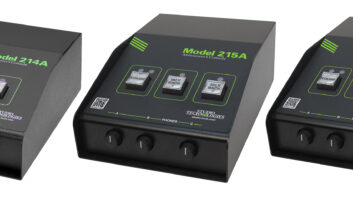Stephanie Donnell is an engineer with New Hampshire Public Radio, based in Concord, N.H., where she recently experienced an unusual problem with RFI noise appearing on the computer video screens in the studios.
The video for the affected monitors is source selected through an Avocent KVM (keyboard/video/mouse) system, shown in Fig. 1, with its central switch in the station’s technical operations center. With some toroids and snap-on ferrite beads applied to the Cat-6 cable feeding video into the Avocent converter boxes for the studio monitors, the noise was reduced to a manageable degree. However, this didn’t address the underlying source of the noise.
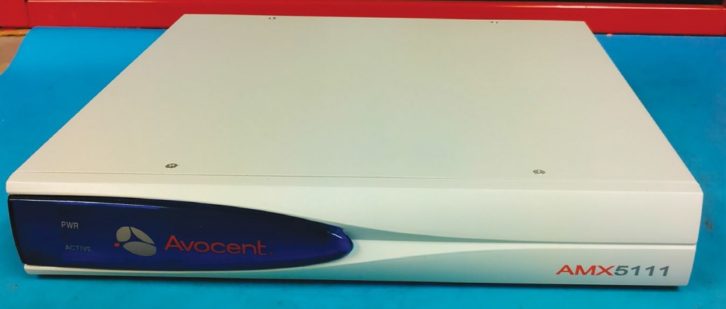
Several theories were considered. Perhaps the noise was from cellular or wireless IP equipment shared on the rooftop directly above the studios. Another possibility was interference from one of the medical offices on the floor directly below the NHPR suite. Would rerouting the cable that fed the video monitors reduce the level of noise? A couple of attempts failed to produce any improvements.
Another thought was that the noise was somehow related to the AC power in the studios and offices. The noise problem had started following some kind of disturbance on the AC utilities across the entire city, as noted on the maintenance log. The log showed a momentary dip in the TPO of the 20 kW FM transmitter just a few miles away.
One thing that they initially tried was to isolate the entire facility from the local power grid by switching over to emergency generator power. In another test, they bypassed a fairly new central UPS, used to power several of offices. Neither of these resulted in any noticeable reduction in the noise.
In addition to the studio monitors, the noise showed up on a monitor that used one of the same KVM units in a recently vacated office. This proved to be helpful; Stephanie could work on the issue there, without worrying about disrupting operations in the studios that had the same issue.
Her troubleshooting began by trying to make sure the space was as electrically “quiet” as possible. She unplugged everything except the power to the video monitor and the KVM box; she unplugged a printer and a couple of small AC (switching) wall warts, which did not result in any changes. When she unplugged a slightly larger wall wart; the monitor screen suddenly became completely clear of the noise. When that wall wart was plugged back in, the noise returned. This larger AC power pack provided 12 volts DC for a desktop SAS intercom terminal in the office.
There were several of these intercoms around, including two in the studio where the problem was the worst. When they powered down one of the studio SAS intercoms, there was no change in the noise on the screens. But when the second SAS intercom was powered off, all of the monitor screens — not just in the studio but in all adjacent studios — became totally clear.
To determine that the actual RFI issue was due to the AC power pack, not something else with the SAS intercom terminals, Stephanie located a new power pack with identical voltage and current ratings. She connected it to the suspect SAS terminal in the studio. The results were the same as when the SAS was powered off. All of the computer monitors remained clear of noise.
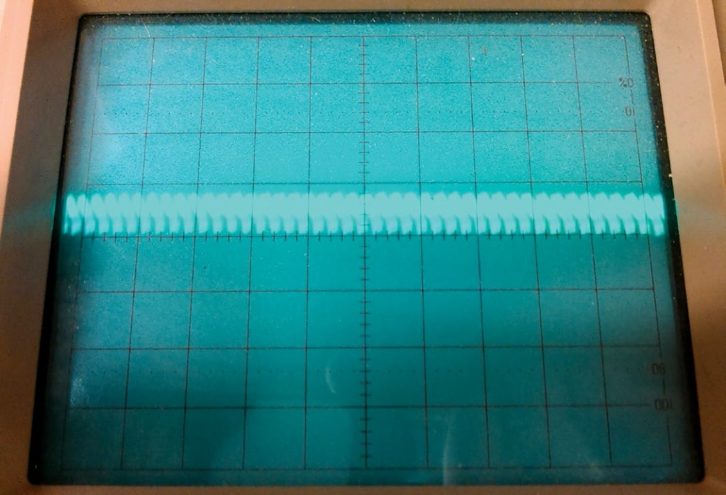
Digging a bit deeper, and having isolated the culprit, Stephanie decided to see what the noise level on the 12 volt output of the good and bad AC power packs looked like with the help of a scope. The “good” supply had around 40–50 mV of noise, as seen in Fig. 2. However the “bad” power pack had nearly 3 volts of some nasty looking noise, pictured in Fig. 3. Stephanie reasoned that much of that same noise was present on the Cat-6 cables going from the SAS terminals, back to the SAS mainframe, located adjacent to the TOC. The SAS cables also shared much of the same route as the Cat-6 cables connecting the different Avocent KVM boxes.
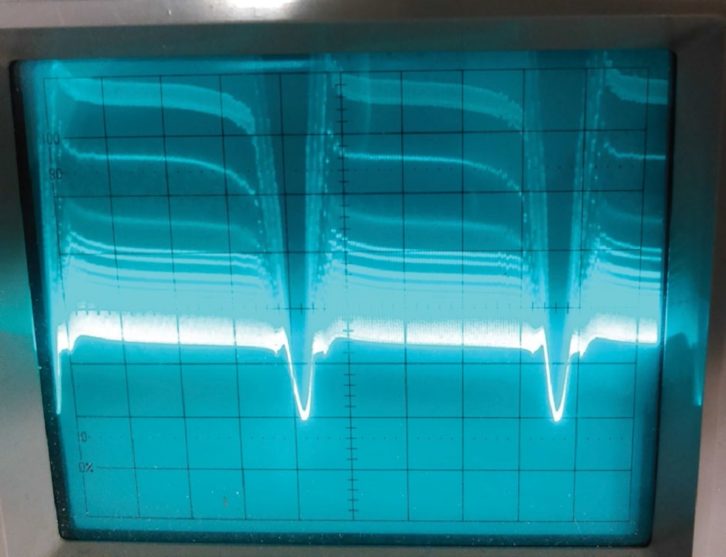
Using a large bench vise she cracked open the bad AC power pack. It didn’t take long to find what she was checking for: a pair of electrolytic capacitors with bulging tops, seen in Fig. 4. This was a typical sign that they were “open” and no longer functioning as filters for the DC output.
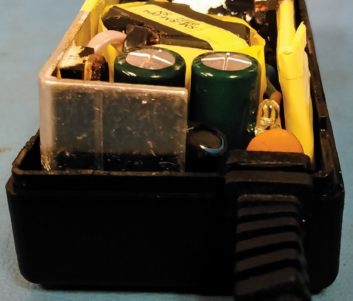
It is interesting that this issue with the SAS intercoms had no noticeable effect on their operation but rather affected an entirely different studio system. It also demonstrates that even capacitors in wall warts can be suspect.
Your contributions to Workbench help other engineers and qualify for SBE recertification credit. Send Workbench tips and high-resolution photos to [email protected].
John Bisset has spent 50 years in the broadcasting industry and is still learning. He handles western U.S. radio sales for the Telos Alliance. He holds CPBE certification with the Society of Broadcast Engineers and is a past recipient of the SBE’s Educator of the Year Award.






